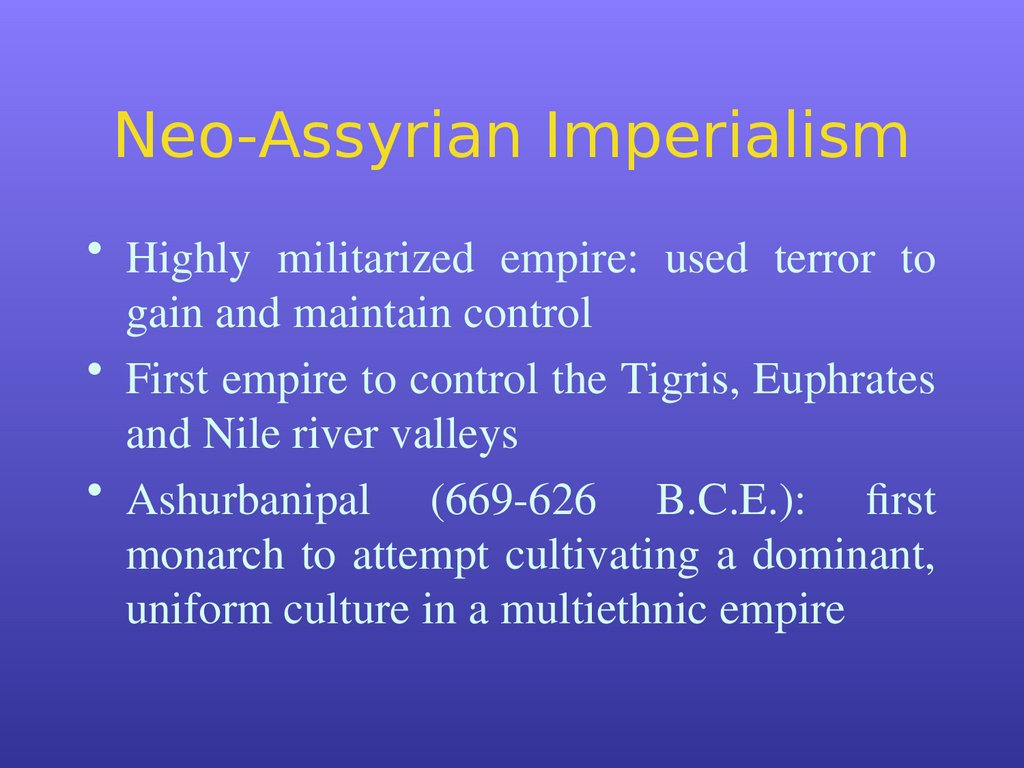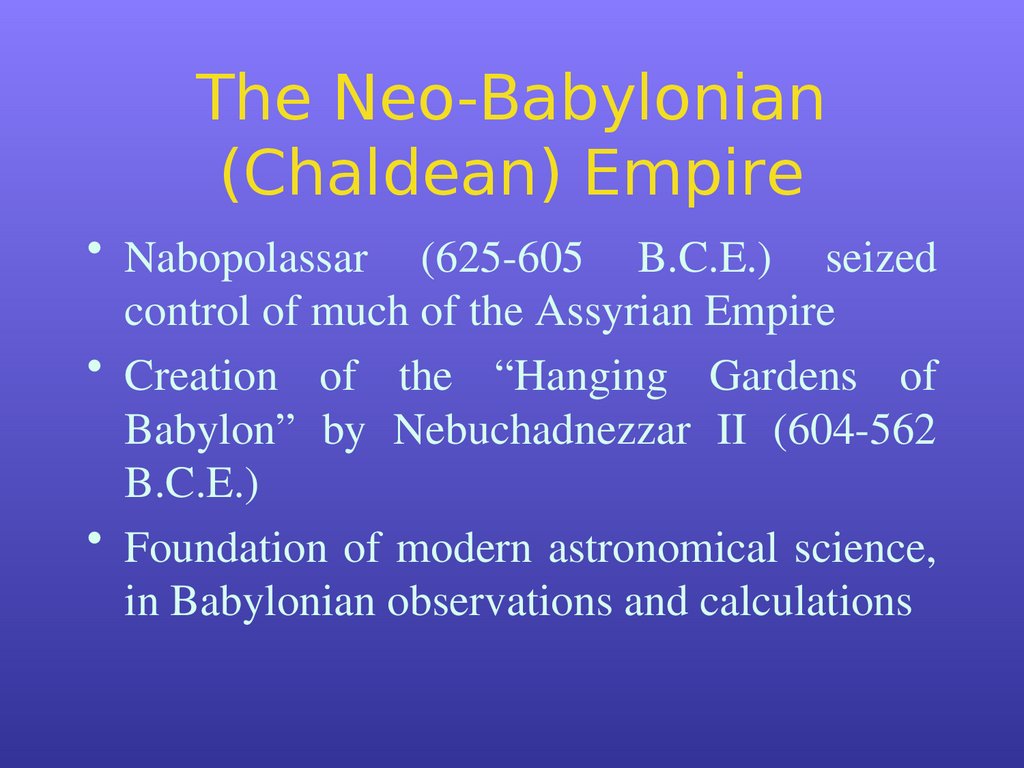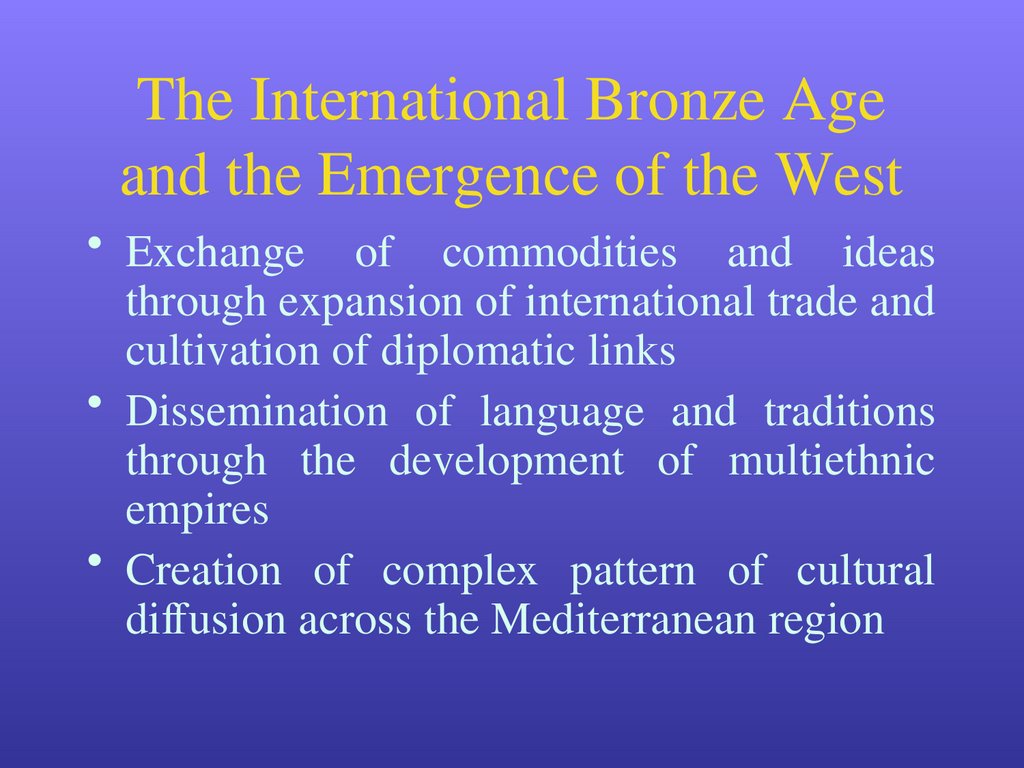Similar presentations:
The International Bronze Age and Its Aftermath: Trade, Empire and Diplomacy, 1600-500 B.C.E
1. The International Bronze Age and Its Aftermath: Trade, Empire and Diplomacy, 1600-500 B.C.E.
The WestCHAPTER 2
2. Government in the New Kingdom
• Hyskos introduced new military technology andinternational links to Egypt
• Pharaoh (“great house”) - final authority in
political, legal, military and religious matters,
served as the link between humanity and the gods
• Centralized bureaucracy supervised by the vizier
and divided into two administrative regions
• Priesthood acquired enormous influence, due to
the great wealth amassed by temples
3. Building an Empire from Canaan to Nubia
• Militarytechnology,
well-developed
logistics and a belief in Egyptian superiority
• Expanded north into the Levant and south
into Nubia
• Egypt acquired enormous wealth
• Exchange of ideas and traditions between
Egyptians and conquered peoples
4. Women in the New Kingdom
• Complete equality between men andwomen on matters of property, business and
inheritance
• Women held roles of importance and power
in religious practice
• Female divinities reflected reverence for
women
5. The Growth of Hittite Power
• Imperial expansion in order to exploit resources ofneighbors
• Administration centered on fortified cities
• Multiethnic empire: seven written languages, in
addition to Hittite
• The Great King was source of all property and
power
• Religion co-opted divinities from all subject
peoples
6. The Kingdom of Babylonia
• 1400 B.C.E. Kassite dynasty seized control,ushering in 250 years of prosperity
• Highly centralized administration
• Lavish expenditure on public works and buildings
• Learning flourished, especially literature, medicine
and science
• Preserved the intellectual legacy of earlier
Mesopotamian civilizations
7. The Kingdom of Assyria
• Under Ashur-Uballit (ca. 1365-1330B.C.E.) Assyria pursued commercial and
diplomatic links with Egypt
• Westward expansion led to clashes with
Hittites
• Under Tukulti-Ninurta I (1244-1208
B.C.E.) Assyria became the dominant
power in Mesopotamia
8. Minoan Crete
• Economic and political administration revolvedaround four “palaces”: Knossos, Phaistos, Mallia and
Zakros - centers for produce collection and
distribution
• Thriving long-distance trade: extensive commercial
links throughout eastern Mediterranean
• Rulers maintained tight control over the production of
wealth
• Developed a simplified hieroglyphic script: Linear A
9. Mycenaean Greece
• Warlike, hierarchical society• No political unity: several small kingdoms
centered on highly fortified palaces
• Cultivated extensive commercial and
diplomatic contacts: established colonies on
Asia Minor and Cyprus
• Used Linear B script: an early form of Greek
10. Two Coastal Kingdoms
• Small, mercantile kingdoms served asbuffer states between the Egyptians, Hittites
and Mycenaeans
• Ugarit: rich in natural resources and
wealthy from trade, developed the common
ancestral alphabet for all modern alphabets
• Troy: famed in legend, produced fine
textiles and bred horses
11. The Raiders of Land and Sea
• Collapse of Mycenaean Greece and HittiteEmpire
• Mass migration by land and sea in eastern
Mediterranean brings destruction to region
• Military and economic decline of Egypt
• Economic and political breakdown of
Mesopotamian kingdoms
12. The Phoenicians: Merchants of the Mediterranean
• Dynamic maritime culture emerged ineastern Mediterranean
• Established political and commercial
connections in North Africa, Spain, Italy,
France and even Britain
• The Phoenician alphabet spread throughout
the Mediterranean, becoming the source of
all Western writing
13. Neo-Assyrian Imperialism
• Highly militarized empire: used terror togain and maintain control
• First empire to control the Tigris, Euphrates
and Nile river valleys
• Ashurbanipal (669-626 B.C.E.): first
monarch to attempt cultivating a dominant,
uniform culture in a multiethnic empire
14. The Neo-Babylonian (Chaldean) Empire
• Nabopolassar (625-605 B.C.E.) seizedcontrol of much of the Assyrian Empire
• Creation of the “Hanging Gardens of
Babylon” by Nebuchadnezzar II (604-562
B.C.E.)
• Foundation of modern astronomical science,
in Babylonian observations and calculations
15. The International Bronze Age and the Emergence of the West
• Exchange of commodities and ideasthrough expansion of international trade and
cultivation of diplomatic links
• Dissemination of language and traditions
through the development of multiethnic
empires
• Creation of complex pattern of cultural
diffusion across the Mediterranean region















 history
history








